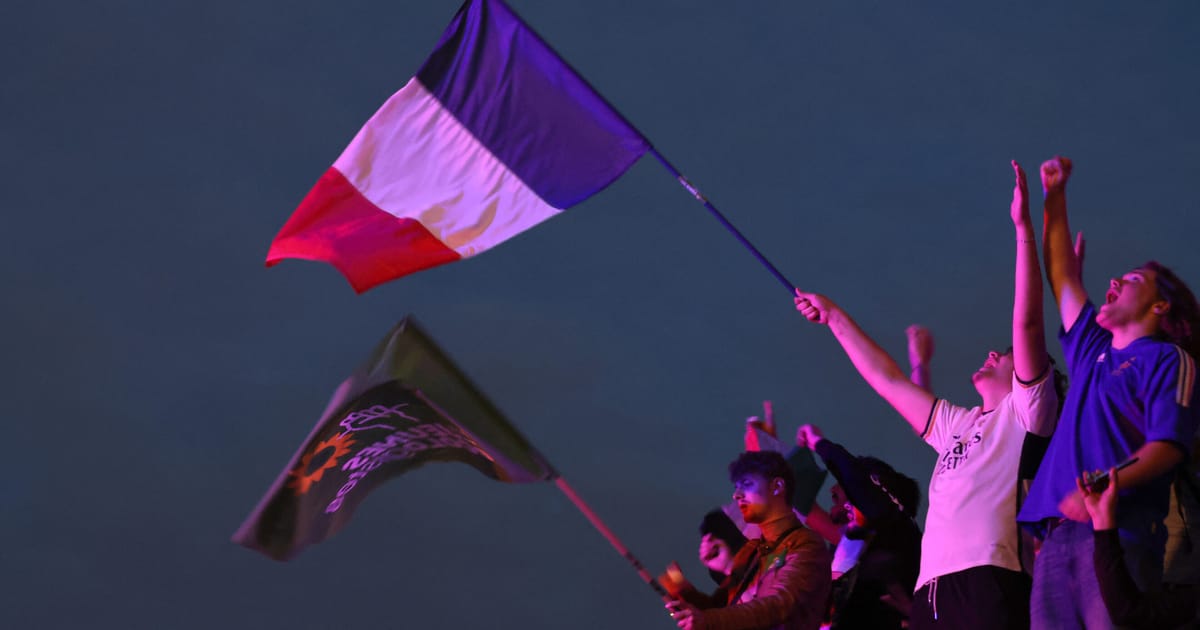How the French voted: charts and maps

In the end, it was the French left bloc, and not Marine Le Pen’s far-right National Rally, that emerged victorious.
French voters went to the polls on Sunday hoping that the National Rally (RN) and its allies could, for the first time, win the most seats in parliament and even form a majority.
But a powerful anti-Le Pen movement, mobilized after the first round of the French elections, mobilized to prevent the RN candidates from taking power.
When the results came in on Sunday evening, Le Pen’s party, now led by Jordan Bardella, had won 142 seats, 50 more than in 2022 but far from the absolute majority of 289.
The left-wing New Popular Front alliance with 188 seats and French President Emmanuel Macron’s Ensemble bloc with 161 seats remain the largest political forces in the National Assembly in Paris, but neither group has the majority needed to govern. (These figures are likely to change when MPs decide which group they will sit with.)
2022
2024
Click on a party to form a majority
| Band | Seats | Change | Votes |
|---|---|---|---|
|
New Popular Front (NFP) |
188 |
+57
|
26.3% |
|
Together (ENS) |
161 |
-76
|
24.7% |
|
National Rally Alliance (RN) |
142 |
+53
|
37.1% |
|
The Republicans (LR) |
48 |
-13
|
6.2% |
|
Other |
38 |
-21
|
5.6% |
A comparison with the 2022 election results shows how the National Rally expanded across France and its overseas territories — but also that the left-wing New Popular Front won more constituencies.
Macron’s Ensemble, although diminished, has not disappeared from the map.
The election could have gone very differently.
In the first round on June 30, candidates linked to the National Rally often won the most votes in their constituencies, without managing to win the seat.
Thanks to the high voter turnout, three or even four candidates crossed the threshold of votes to reach the second round in more than 300 constituencies.
In the days following the first round, more than 200 candidates withdrew from the race, often to make way for a candidate with a better chance of defeating the National Rally.
On Sunday, Bardella denounced what he described as an “unnatural alliance” between Macron and the left “to stop by all means the most important rise of the National Rally in its history.”
The high stakes of the election also seem to have been felt by voters.
Sunday’s turnout was the highest in 20 years, unlike previous elections where turnout tended to decline after the first round.
However, the victory of the left bloc is not as simple as it might seem.
The alliance between the radical France Insoumise, the Socialist Party, the Greens and the Communist Party held firm in the national election, but lacks coherence and a clear leader.
While Jean-Luc Mélenchon’s La France Insoumise is winning more seats, the Socialist Party is also strengthening its presence.
The final picture is one of fragmentation, with no group managing to win 200 seats in the 577-seat National Assembly. The three main groups – the left, Maron’s centrists and the far right – will all struggle to muster a stable majority, suggesting a deadlock and paralysis in Paris.
Macron may have prevented Le Pen’s victory, but no one really won.
Alexandre Léchenet contributed to the report
Politico





